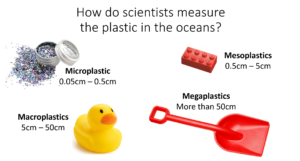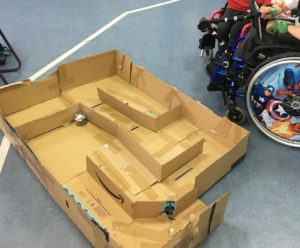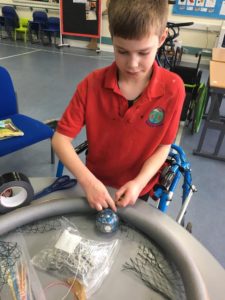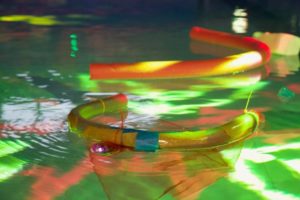Plastic Oceans STEM Challenge
How can we use data to find out about the problem with plastics in the ocean? In the lessons from our resource pack, learners investigate themes of sustainability and environmental awareness whilst participating in a STEM challenge. Learners will explore and capture data about recycling, before going on to design a water-based plastic collecting robot prototype using Sphero bots and recycled materials.
About this project and our partners
This unit of work originated as an idea from a workshop with student teachers in the University of Edinburgh. When thinking about ways to use the waterproof functionality sphero robots, it was suggested that learners could design model vessels to clean up plastic and trial them in swimming pools, as if it was in the ocean.
Braidburn Special School in Edinburgh was approached due to their facilities and approachable staff. We also wanted to try designing a unit of work for learners with additional support needs and then adapting it for mainstream learners, rather than the other way around, which is more usual but less optimal for ASN educators and learners.
What did we do?
The school asked that we trial the lessons with P7 learners as part of a JASS Award (Junior Award Scheme for Schools) to cover the ‘Me and My World’ category. We developed and trialled five lessons. After each lesson, notes were made about how that lesson needed to be tweaked, and what changes would be required for mainstream learners. This strategy turned out to work quite well.
In the first lesson, learners found out about the Ocean Cleanup project that has been trialling different methods of collecting plastic out of the ocean. The project has done surveys of the plastics to scope out the problem. The learners then did their own survey work, categorising a collection of plastic items into four categories of sizes: microplastics (like glitter and sequins), mesoplastics (like bottle caps and toy bricks), macroplastics (such as drinks bottles and toy cars), and megaplastics (broken umbrellas and sandcastle buckets left at the beach).

In the second lesson, learners can gather their own data by planning a survey of recycling in the school. Learners at Braidburn gathered the recycling boxes from each class. Mainstream learners could gather data to answer questions they may have to find out which class does the most recycling, what types of plastic are recycled in the school, or which class can reduce the most waste by reusing materials.

Learners reused some of the recycling materials gathered in the second lesson by creating cardboard mazes and plastic bottle obstacle courses in lesson three. This allowed them to get used to controlling Sphero robots. In the next lessons, learners designed, built and trialled Sphero-powered vessels (bot-boats?!). They were placed in the swimming pool along with a selection of plastic objects and the learners then tried to gather them with their bot-boats creations.

What did we find out?
We found that this method of development seemed to be very successful. It was an interesting challenge to develop materials for ASN learners first and then adapt them for mainstream learners. The staff at Braidburn were exceptionally helpful in this regard, having expertise in working with both ASN and mainstream sectors.
We also discovered that Sphero robots are pretty rubbish at swimming! They float but can’t get traction to move forwards in the water as they do on land. We think that using some of the recycled plastic drinks bottles, with fins cut into the ends, would allow the Sphero to move a bit like a paddle steamer!

What resources did we use?
Most of the materials used were recycled plastics and cardboard, or plastic objects of various sizes that could be gathered by a whole class. For creating the bot-boat vessels, we used swim noodles and pipe lagging, netting of various sizes and tape. We used Sphero robots and tablets to control these. This kit will be available for schools to loan from the Data Education in Schools project.
Next steps
We want to try these lessons in a mainstream Primary school to make sure that the adapted lessons work well for a variety of learners. We’d then love to see more schools use this resource, perhaps even using the lessons as part of a cluster STEM design challenge.
If you want to try Plastic in the Oceans in your school, take a look at the lesson pack on our resources page.



